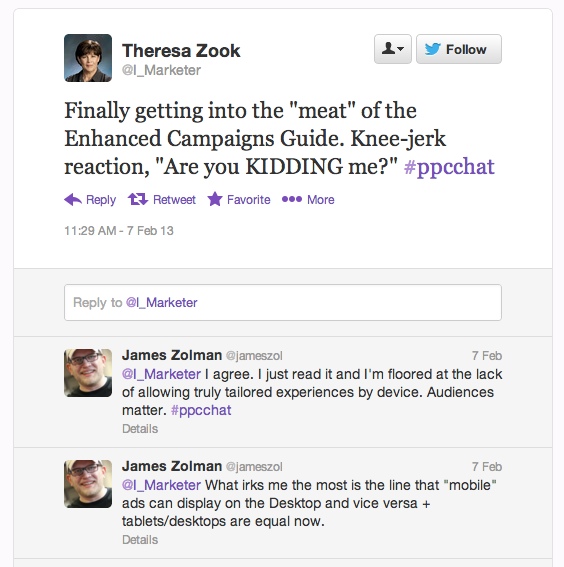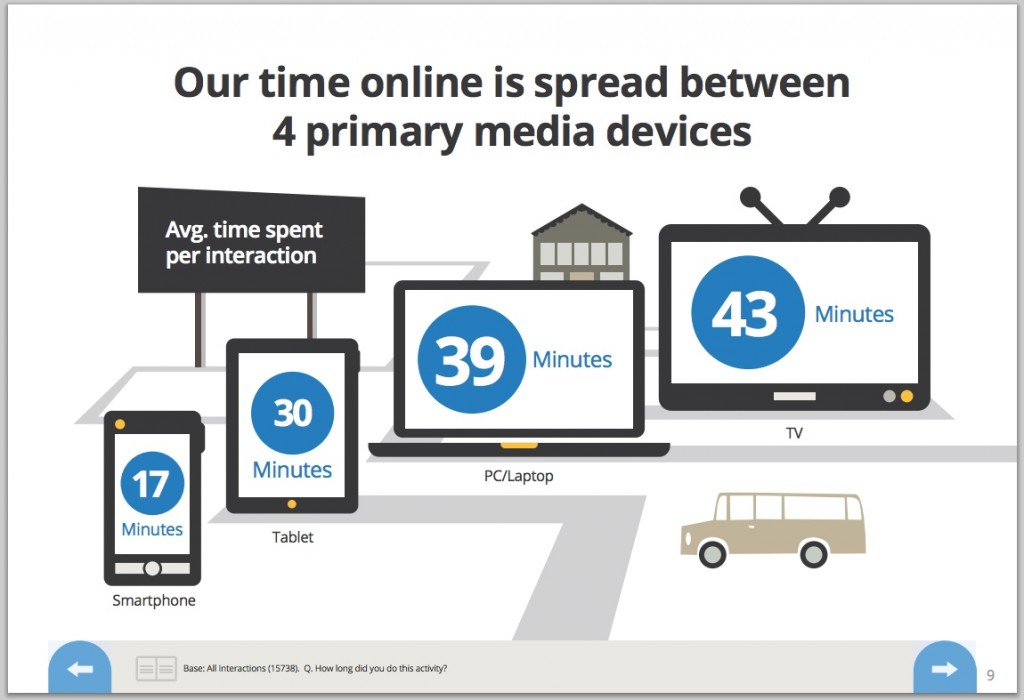This month, Google announced Enhanced Campaigns in AdWords, and it’s caused quite a stir. Google says the new structure is for the good of people performing the search and the business serving the ads. Some advertisers think it could be for the good of Google and its wallet. Whichever side you’re on, these changes have the potential to make a big impact. Let’s quickly recap the story of Google Adwords Enhanced Campaigns, and then we’ll dive into some details.
This is Google’s take on Enhanced Campaigns:
And this is what marketers are saying:

As you can see, it’s an industry divided.
So, What’s the Deal?
Like many, we’re on the fence here at Group Twenty Seven about Google AdWords Enhanced Campaigns. Let’s go over a couple pros and cons with the new functionality in AdWords.
- Pro: We see a benefit of Enhanced Campaigns in making accounts more manageable. When advertisers have multiple campaigns that start segmenting into device, we double or triple the size of the account. And that makes for a lot of work. Enhanced Campaigns puts all the device bidding in one place.
- Pro: Spend on mobile clicks have been getting more expensive. With the new bidding in Enhanced Campaigns, you have several options for campaign-level bidding like times, days and locations, and can adjust bids for postal codes and other geographic elements.
- Con: In the new AdWords model of Enhanced Campaigns, we don’t have an opt-in capability (although people in the industry are rallying together with a petition to get Google to offer that). While much of this new functionality may be great for smaller, local businesses, it’s not so great for every type of business. So some of us want to retain the control we had previously.
- Con: Enhanced Campaigns lumps the tablet device with the desktop. In its official announcement of Enhanced Campaigns, Google states, “… as devices converge, consumer behaviors on tablets and desktops are becoming very similar.” But as advertisers, we’re losing the advantage of the sometimes-lower CPC of the tablet as a separate campaign. We are currently seeing more and more conversions via tablets over say, a year ago. And would only suspect that would continue.
Why Would Tablets Be Lumped in with Desktop?
Perhaps when Google was referring to the tablet/PC behavior I noted in the previous section, it was referencing data uncovered in this study published by Google from August 2012.
On Page 9, the stats show the average time spent per interaction on a tablet was 30 minutes, while the PC was 29 minutes.

From the Google study: The New Multi-screen World:
Understanding Cross-platform Consumer Behavior
In looking at our own data, our tablet per visit value on a month-by-month basis is slightly lower over desktops. But during November 2012, tablets drove five times the per-visit value. This is due to Black Friday/Cyber Monday, when more shoppers were on the go.
In 2013, we could have had special bidding strategies for tablet campaigns. The click costs have always been lower and continue to be lower than desktop, and that’s something we’ll miss out on now.
It’s almost as if Google has taken away control that advertisers have of something significant, but trying to make it seem OK by offering up a bunch of other shiny new objects.
Stay Tuned for Developments
Google Adwords Enhanced Campaigns started rolling out on some accounts, and we’re already digging in. Google says the functionality is said to be completely integrated by mid-2013.
If you want to learn more about all Enhanced Campaigns, check out Google’s resources on it. They also have several webinars planned to go over the functionality. Search Engine Land is also a great place for resources on the topic, like this post by Neil Sorenson.
If you have any questions or comments about what you’re seeing, let us know!






